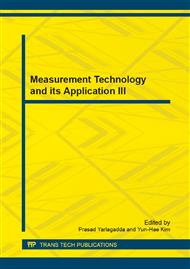p.1880
p.1885
p.1889
p.1893
p.1901
p.1907
p.1911
p.1915
p.1921
A Steroidal Saponin RCE-4 Inhibits Lipopolysaccharide-Stimulated Inflammatory Responses via Blocking PI3K/Akt-Mediated Nf-κB Activation in RAW264.7 Cells
Abstract:
Steroidal saponin: (1β,3β,5β,25S)-spirostan-1,3-diol1-[α-L-rhamnopyranosyl-(1→2)-β-D-xylopyranoside] (RCE-4) is the most abundant and bioactive members in Reineckia carnea, has been reported to possess antiinflammatory activity, but the underlying mechanisms remain largely unknown. The present aim was to study expression of inflammatory cytokines, on the basis of this investigation, the possible mechanism of RCE-4 was elucidated. In the present study, we found that the concentrations of TNF-α, IL-1β and IL-6 released from LPS-stimulated RAW264.7cells significantly increased compared to control (P<0.01, respectively). After pretreatment with RCE-4, the TNF-α, IL-1β and IL-6 levels significantly decreased compared with the LPS group (P<0.05, P<0.01, respectively). Further studies indicated that RCE-4 significantly suppressed Akt phosphorylation and NF-қB activation, and with the dose of RCE-4 increasing; their improvement became more and more strong. Our results showed that RCE-4 inhibited LPS-stimiulated TNF-α, IL-1β, IL-6 productions through the blockage of PI3K/Akt-mediated NF-κB activation. Our findings might provide a molecular basis for the ability of RCE-4 serving as a promising candidate for treating various inflammatory diseases.
Info:
Periodical:
Pages:
1901-1906
Citation:
Online since:
June 2014
Authors:
Price:
Сopyright:
© 2014 Trans Tech Publications Ltd. All Rights Reserved
Share:
Citation:


